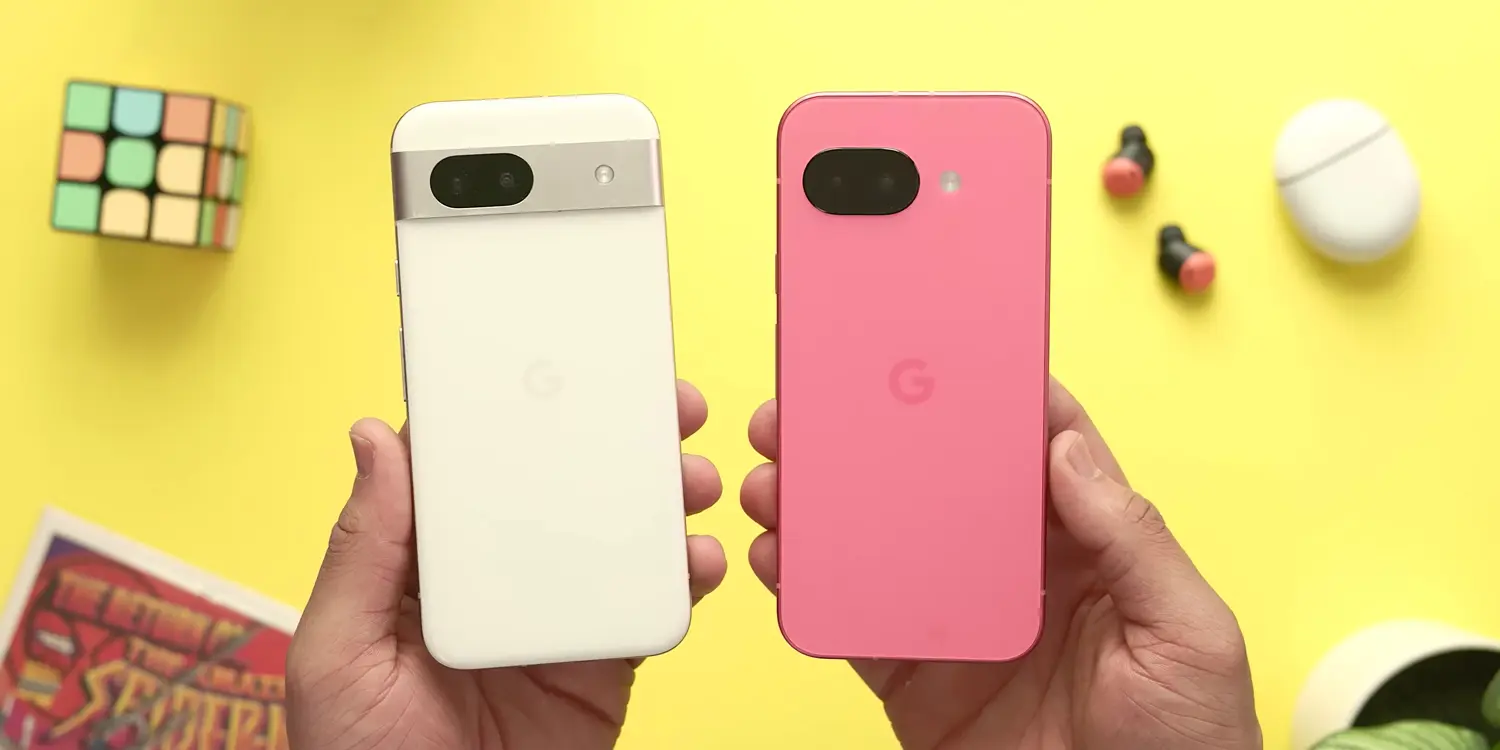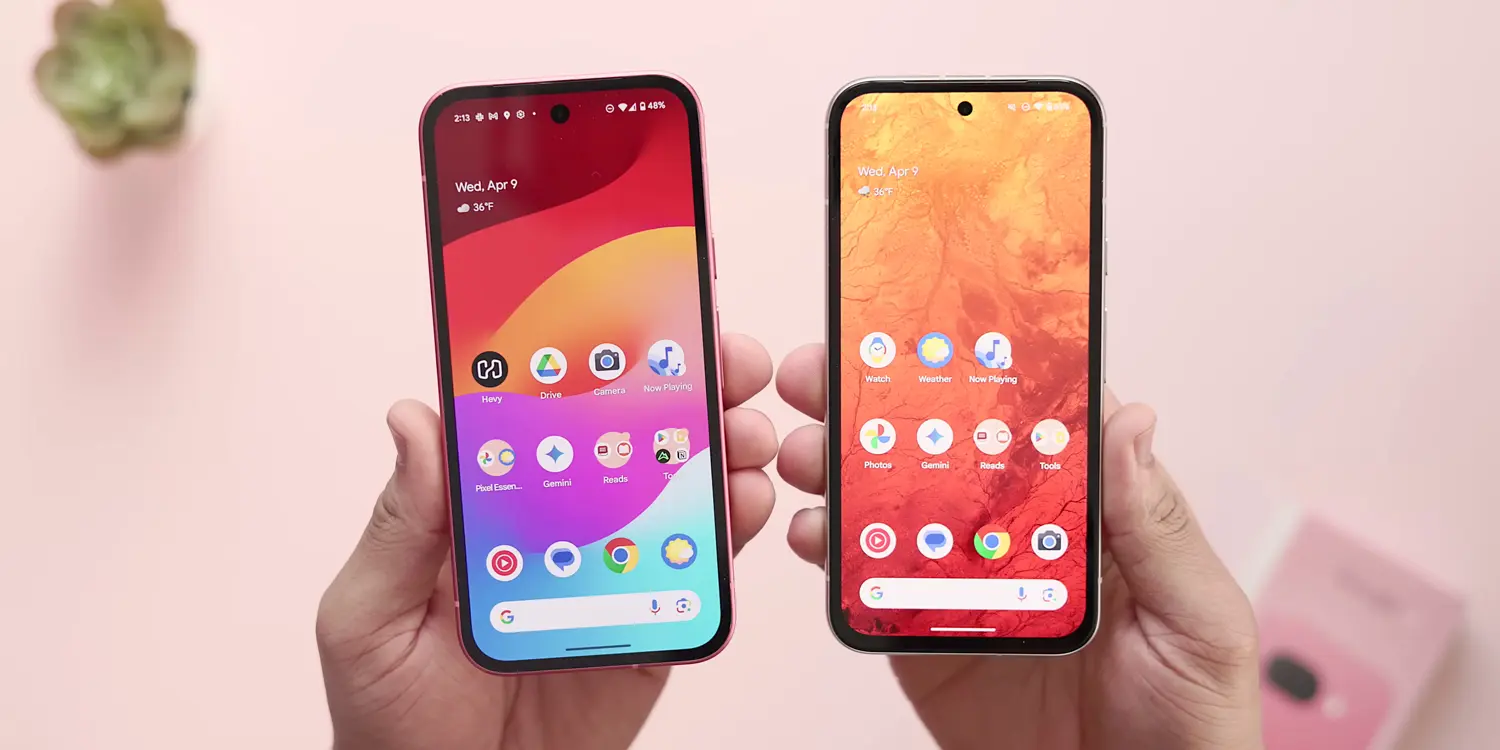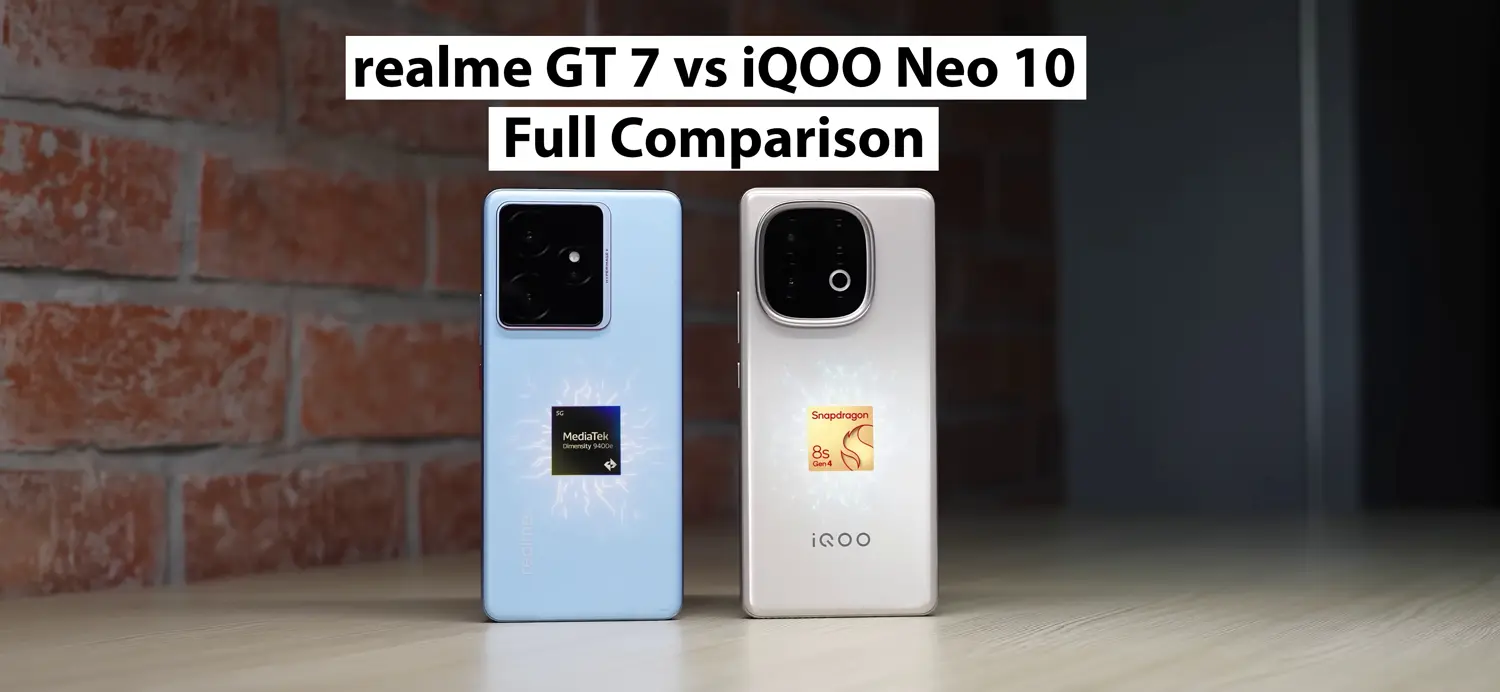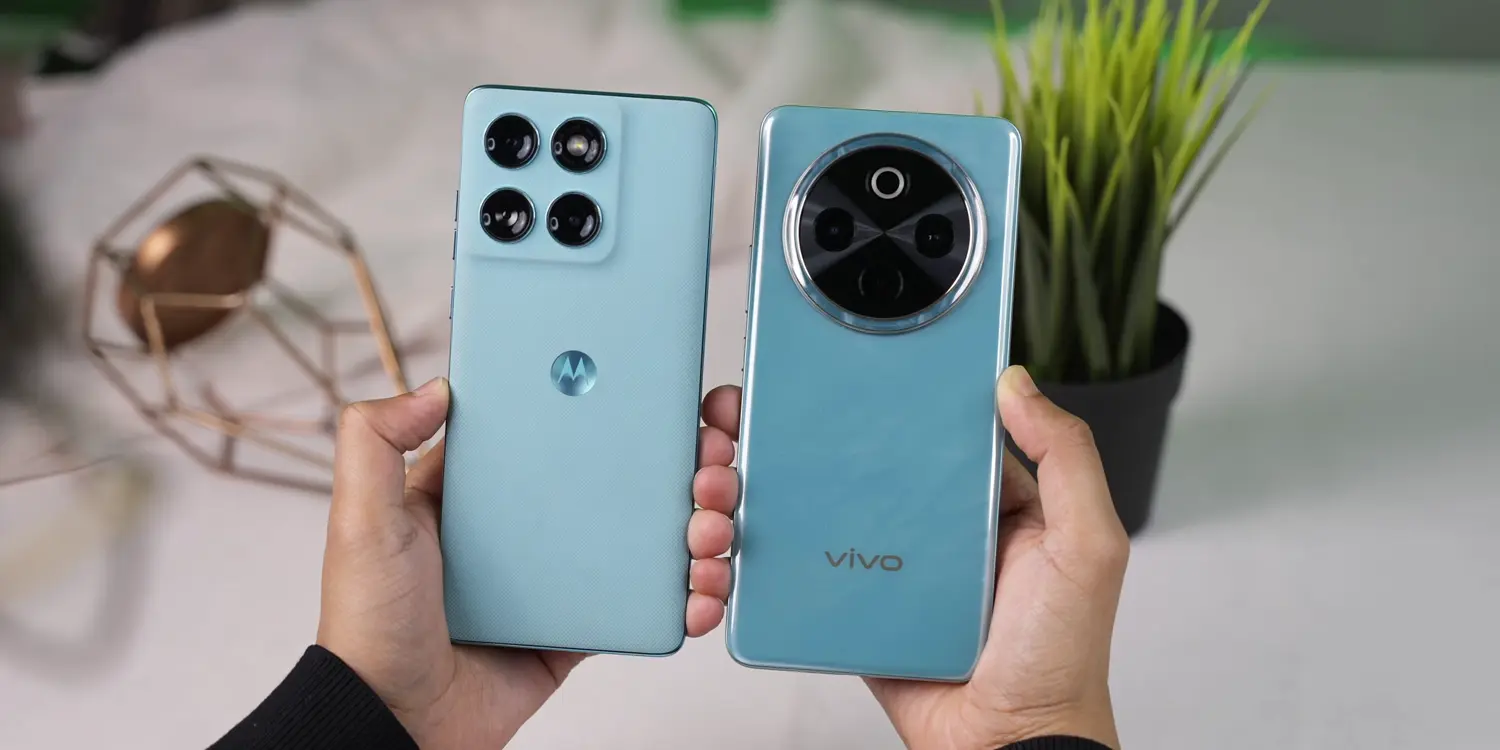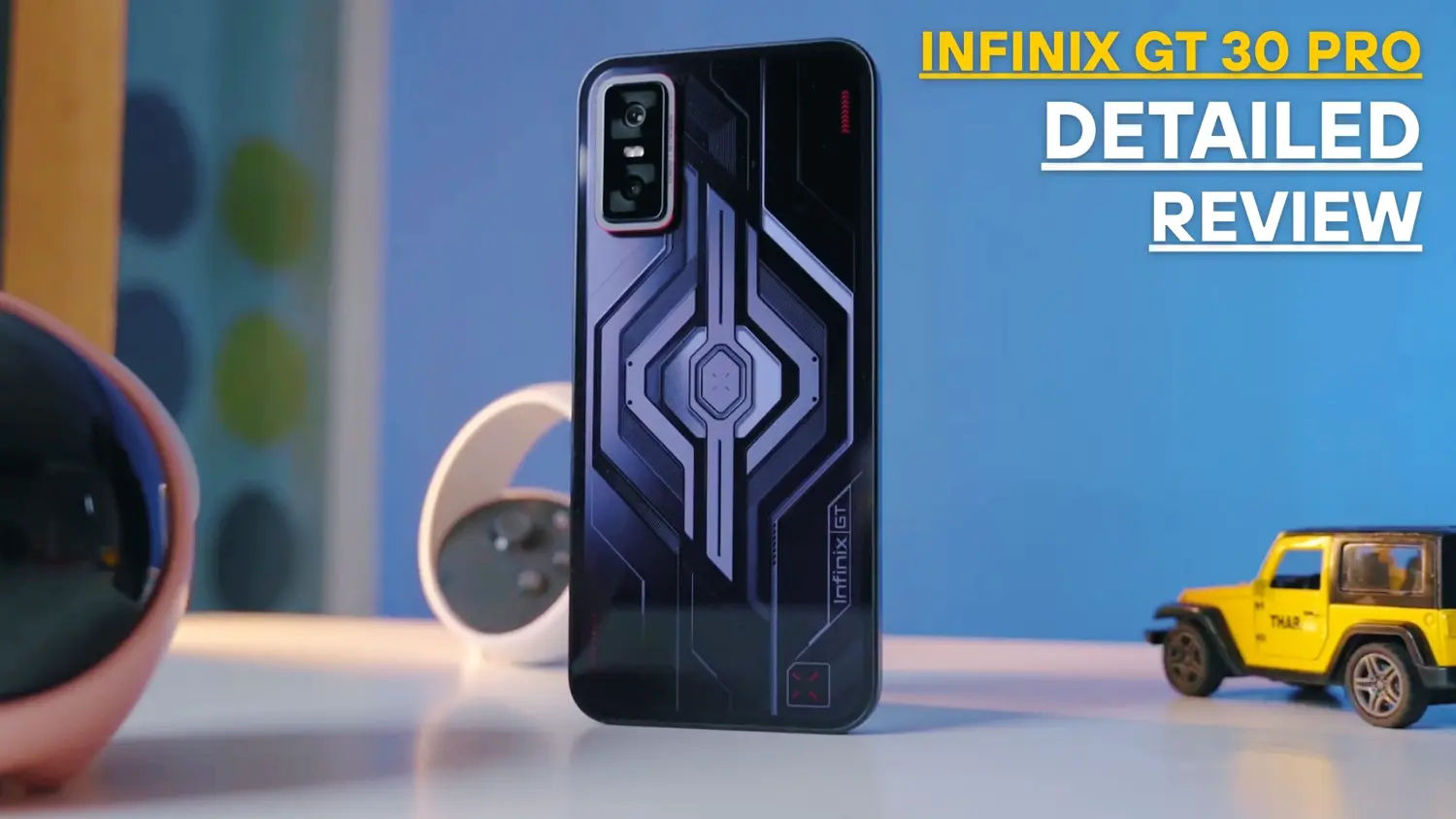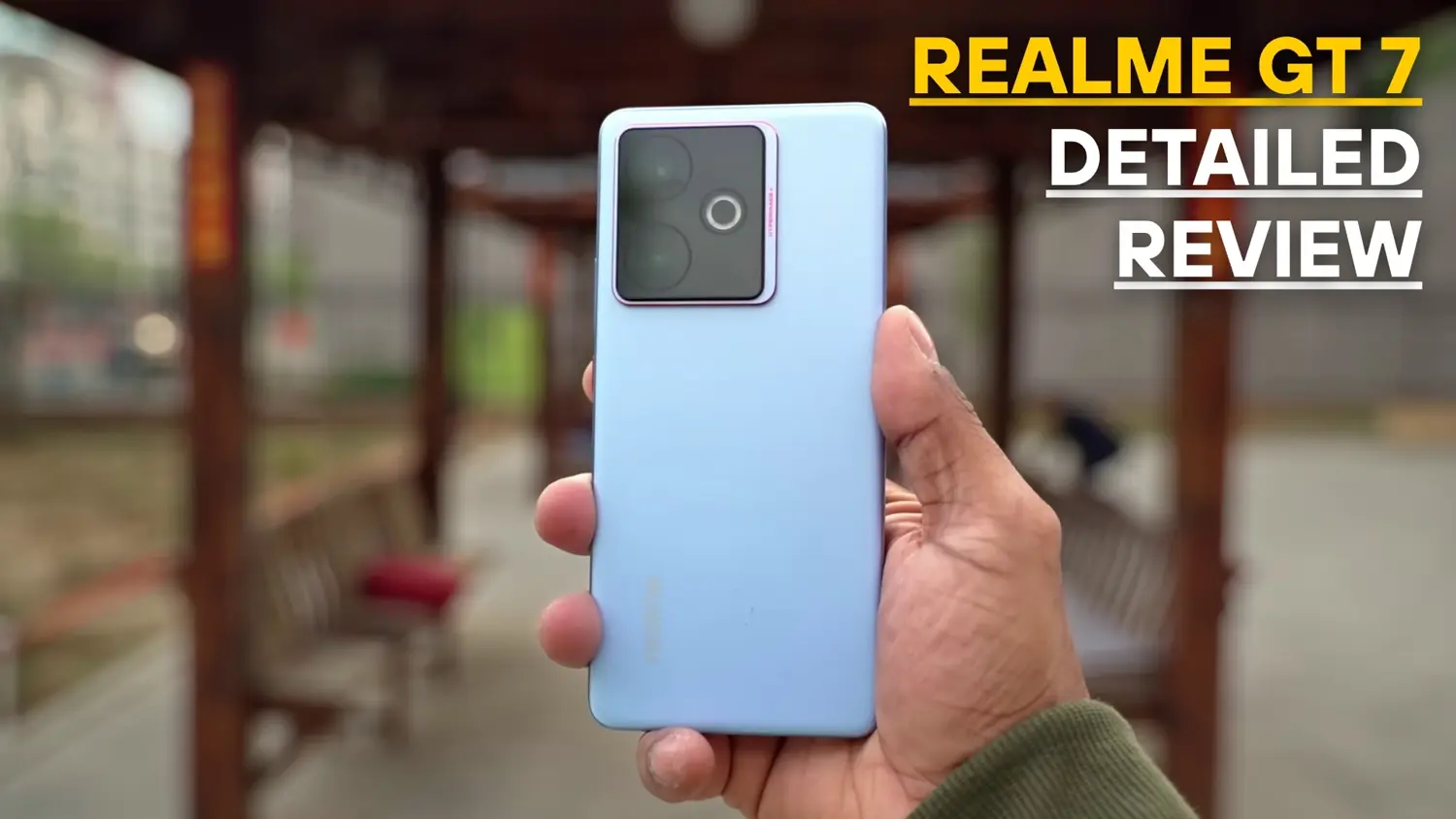The Google Pixel A-series has always been a favorite for those who want premium features at a budget-friendly price. With the launch of the Pixel 9a in 2025, Google has taken its mid-range game to the next level. But how does it compare to last year’s Pixel 8a, which was already a solid performer? In this article, we’ll break down the differences between the Pixel 9a and Pixel 8a in terms of design, display, performance, camera, battery, and software. We’ll also help you decide whether the Pixel 9a is worth buying or if sticking with the Pixel 8a makes more sense. Let’s dive in!
Design: A Fresh Look for the Pixel 9a

The Pixel 9a brings a significant design overhaul compared to the Pixel 8a. Gone are the soft, curved edges and the iconic camera bar that defined the Pixel 8a. Instead, the Pixel 9a adopts a modern, flat-edged design with a nearly flush dual-camera setup in the top-left corner. This makes the phone look sleek and aligns it with the design trends of 2025, similar to the flagship Pixel 9 series.
The Pixel 8a, on the other hand, sticks to the classic Pixel aesthetic with its curved edges and a metallic camera bar that stretches across the back. While this design is ergonomic and comfortable to hold, it feels a bit dated compared to the sharper, more refined look of the Pixel 9a.
Another key difference is the build quality. The Pixel 9a uses a high-quality plastic back with an aluminum frame, which feels premium despite not being glass. The Pixel 8a also has a plastic back, but its matte finish resists fingerprints better. However, the Pixel 9a takes durability up a notch with an IP68 rating for dust and water resistance, compared to the Pixel 8a’s IP67 rating. This means the Pixel 9a can handle deeper water submersion for longer, making it a safer choice for outdoor use.
In terms of size, the Pixel 9a is slightly larger (154.7 x 73.3 x 8.9 mm) and lighter (185.9 g) than the Pixel 8a (152.1 x 72.7 x 8.9 mm, 188 g). The larger dimensions accommodate a bigger display, but the lighter weight makes it easier to carry. Color options also differ: the Pixel 9a comes in Obsidian (black), Porcelain (white), Iris (purple), and Peony (pink), while the Pixel 8a offers Obsidian, Porcelain, Bay (blue), and Aloe (green). The Pixel 9a’s colors feel more vibrant and modern, but the Pixel 8a’s Bay and Aloe are still eye-catching.
Verdict: If you prefer a modern, flat design and better durability, the Pixel 9a is the way to go. However, if you like the classic Pixel look and a more compact form factor, the Pixel 8a is still a great choice.
Display: Bigger and Brighter on the Pixel 9a

The display is one area where the Pixel 9a shines. It features a 6.3-inch pOLED display with a Full HD+ resolution (2424 x 1080 pixels), a 120Hz refresh rate, and a peak brightness of 2700 nits. This is a step up from the Pixel 8a’s 6.1-inch OLED display, which also has a Full HD+ resolution and a 120Hz refresh rate but peaks at 2000 nits.
The larger screen on the Pixel 9a offers more space for apps, games, and videos, making it ideal for media consumption. The higher brightness ensures better visibility in direct sunlight, and the adaptive 60-120Hz refresh rate helps save battery by adjusting based on content. However, the Pixel 9a’s bezels are noticeably thicker than those on the flagship Pixel 9, which might bother some users. The Pixel 8a also has thick bezels, but its smaller size makes them less prominent.
Both phones use Corning Gorilla Glass 3 for display protection, which is decent but not as advanced as the Gorilla Glass Victus 2 found on higher-end models. The Pixel 8a supports an Always-on Display feature, which is surprisingly missing on the Pixel 9a, a minor drawback for some users.
Verdict: The Pixel 9a’s larger, brighter display makes it better for outdoor use and immersive experiences. If you prefer a slightly sharper, more compact screen, the Pixel 8a still holds up well.
Performance: Tensor G4 Takes the Lead
The Pixel 9a is powered by Google’s Tensor G4 chipset, the same processor found in the Pixel 9 series, though slightly tweaked for efficiency. It’s paired with 8GB of RAM and storage options of 128GB or 256GB. The Pixel 8a, in contrast, uses the older Tensor G3 chipset with the same 8GB of RAM and storage variants.
The Tensor G4 offers a noticeable performance boost, especially for tasks like web browsing, app launches, and gaming. Google claims the Pixel 9a is 30% faster than the Pixel 8a for web browsing, and real-world tests show smoother performance in resource-intensive apps like Genshin Impact. The Pixel 8a’s Tensor G3 is no slouch, handling everyday tasks and light gaming with ease, but it lags slightly behind in demanding scenarios.
Both phones come with the Titan M2 security chip for enhanced protection, and the Pixel 9a includes a vapor chamber for better thermal management, addressing overheating issues seen in previous A-series models. The 8GB of RAM on both devices is sufficient for multitasking, but the Pixel 9a’s newer chipset gives it an edge for future-proofing.
Verdict: The Pixel 9a is faster and better equipped for demanding tasks, making it a smarter long-term investment. The Pixel 8a is still capable for most users but may struggle with heavy workloads.
Camera: Subtle Upgrades on the Pixel 9a
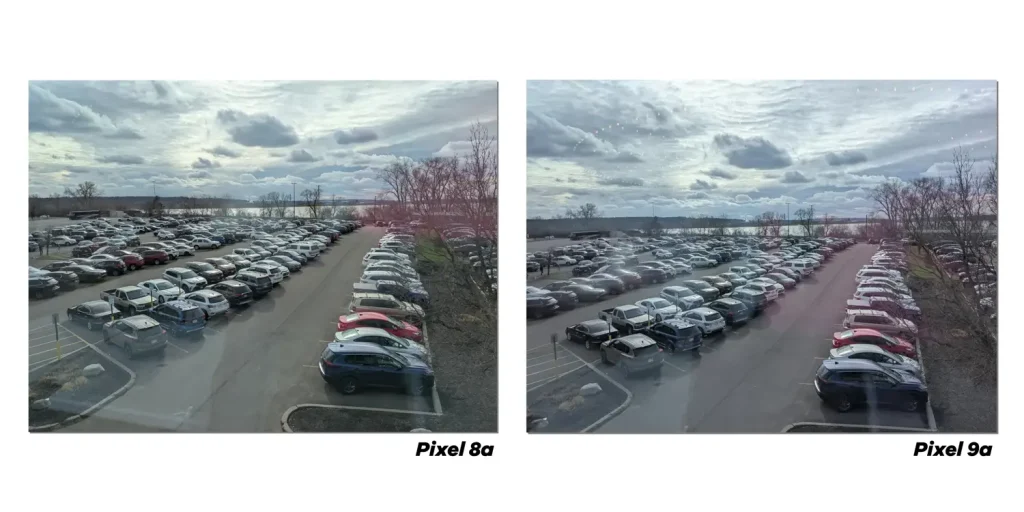
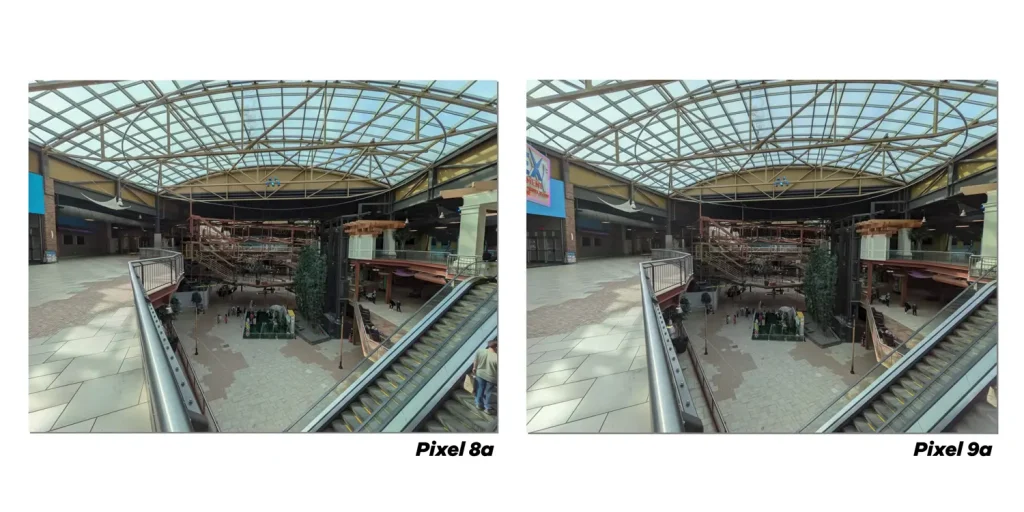


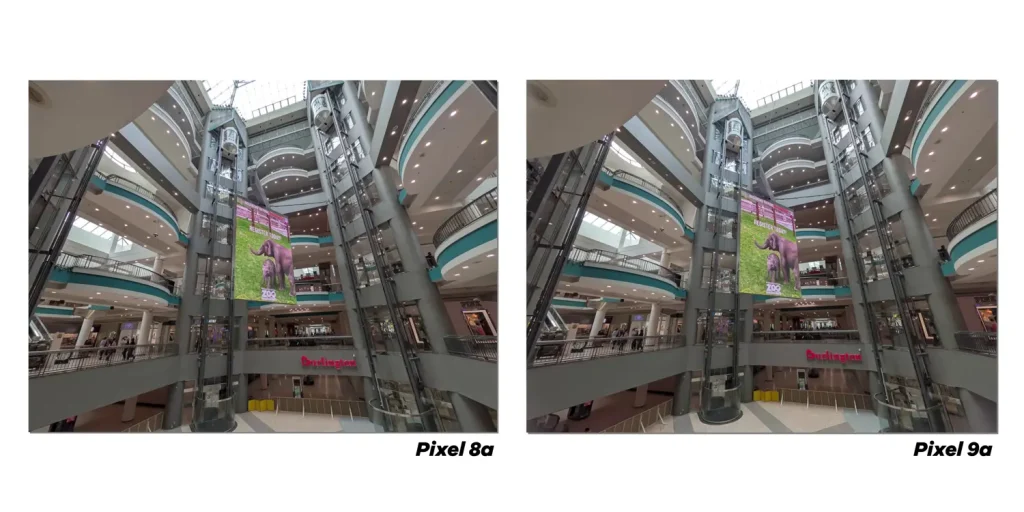
Google’s Pixel phones are known for their stellar cameras, and the A-series is no exception. The Pixel 9a features a 48MP main camera with a larger aperture (f/1.7) and Dual Pixel autofocus, paired with a 13MP ultrawide camera. The Pixel 8a, on the other hand, has a 64MP main camera (f/1.89) and a 13MP ultrawide camera. Both phones have a 13MP front-facing camera for selfies.
At first glance, the Pixel 8a’s higher megapixel count might seem superior, but the Pixel 9a’s larger sensor and wider aperture capture more light, resulting in sharper images with better dynamic range. The Pixel 9a also introduces new AI-powered features like Macro Focus for close-up shots and Add Me for enhanced group photos, which the Pixel 8a lacks. Both phones support Night Sight for low-light photography and Magic Eraser for photo editing, ensuring excellent results across lighting conditions.
The ultrawide and selfie cameras are identical on both phones, delivering consistent performance. Video recording capabilities are also similar, with support for 4K at 30fps. While the Pixel 9a’s camera is a slight improvement, the Pixel 8a remains a strong contender in the mid-range segment.
Verdict: The Pixel 9a offers better low-light performance and exclusive features, but the Pixel 8a’s camera is still impressive for most users.
Battery Life: Pixel 9a’s Big Leap Forward
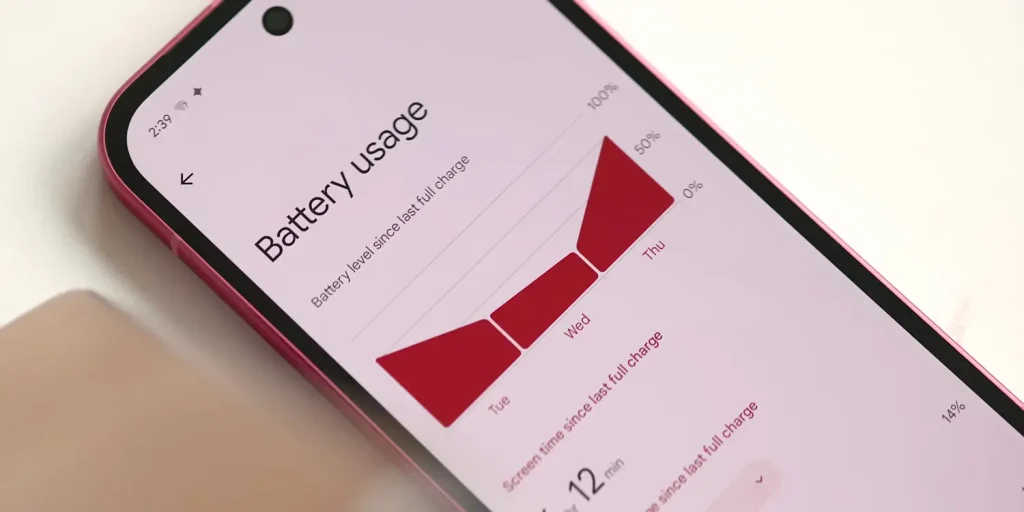
Battery life is a major highlight of the Pixel 9a. It houses a 5100mAh battery, a significant upgrade from the Pixel 8a’s 4492mAh cell. The Pixel 9a also supports faster 23W wired charging compared to the Pixel 8a’s 18W, though both offer 7.5W wireless charging. In real-world tests, the Pixel 9a lasts up to 57 hours with light use, outpacing the Pixel 8a by a wide margin. Even with heavy usage, such as gaming or tethering, the Pixel 9a comfortably lasts a full day.
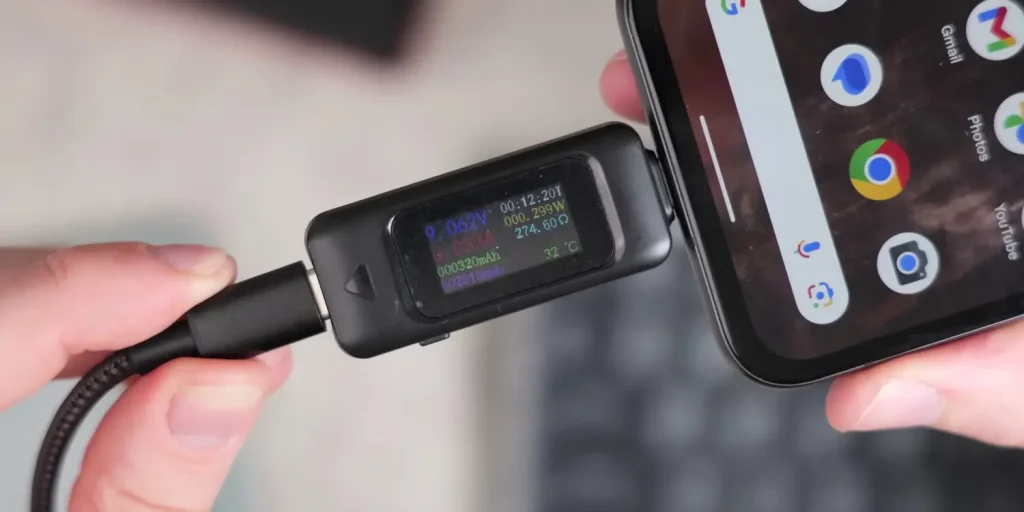
The faster charging on the Pixel 9a means it reaches 85% in about an hour, while the Pixel 8a takes longer due to its slower charging speed. Neither phone includes a charger in the box, so you’ll need a compatible USB-C charger to take advantage of these speeds.
Verdict: The Pixel 9a’s larger battery and faster charging make it the clear winner for users who prioritize longevity and convenience.
Software: Android 15 with Long-Term Support
Both the Pixel 9a and Pixel 8a run Android 15 out of the box, offering a clean, bloatware-free experience with Google’s signature AI features. The Pixel 9a, however, benefits from the Tensor G4’s enhanced AI capabilities, supporting features like Gemini Nano XXS for text-based AI tasks, Pixel Studio for image generation, and Reimagine for photo tuning. The Pixel 8a misses out on some of these due to its older Tensor G3 chipset, though it still supports core AI features like Magic Eraser and Best Take.
Google promises seven years of software updates for both phones, ensuring support until 2031 for the Pixel 8a and 2032 for the Pixel 9a. This makes both devices excellent choices for long-term use. The upcoming Android 16 update will likely bring identical core experiences, but the Pixel 9a may gain exclusive AI features over time.
Verdict: The Pixel 9a offers a slight edge with newer AI features, but both phones deliver a top-notch software experience with long-term support.
Specification Comparison Table
| Feature | Pixel 9a | Pixel 8a |
|---|---|---|
| Display | 6.3-inch pOLED, 120Hz, 2700 nits | 6.1-inch OLED, 120Hz, 2000 nits |
| Processor | Google Tensor G4, Titan M2 | Google Tensor G3, Titan M2 |
| RAM | 8GB | 8GB |
| Storage | 128GB / 256GB | 128GB / 256GB |
| Main Camera | 48MP (f/1.7), Dual Pixel, OIS | 64MP (f/1.89), OIS |
| Ultrawide Camera | 13MP (f/2.2) | 13MP (f/2.2) |
| Selfie Camera | 13MP | 13MP |
| Battery | 5100mAh, 23W wired, 7.5W wireless | 4492mAh, 18W wired, 7.5W wireless |
| Water Resistance | IP68 | IP67 |
| Dimensions | 154.7 x 73.3 x 8.9 mm, 185.9 g | 152.1 x 72.7 x 8.9 mm, 188 g |
| Colors | Obsidian, Porcelain, Iris, Peony | Obsidian, Porcelain, Bay, Aloe |
| Price (India) | ₹49,999 (128GB), ₹56,999 (256GB) | ₹37,999 (128GB, discounted) |
Should You Buy the Pixel 9a or Stick with the Pixel 8a?
The Pixel 9a is a clear upgrade over the Pixel 8a in several key areas: a modern design, brighter display, faster processor, better battery life, and improved camera features. Priced at ₹49,999 in India, it offers excellent value for money, especially compared to the iPhone 16e and Samsung Galaxy S24 FE in the mid-range segment. Its larger battery and seven-year update promise make it a future-proof choice for users who want a reliable phone for years to come.
However, the Pixel 8a remains a strong contender, especially at its discounted price of around ₹37,999. It offers nearly the same software experience, a capable camera, and decent performance for everyday tasks. If you already own a Pixel 8a, upgrading to the Pixel 9a may not be worth it unless you need the better battery life or specific AI features. For new buyers, the Pixel 8a is a budget-friendly option if you can find it at a significant discount (e.g., under ₹30,000), but the Pixel 9a is the better overall package.
Who Should Buy the Pixel 9a?
- Users who want a modern design and better durability (IP68).
- Those who need long battery life and faster charging.
- People looking for the latest AI features and future-proof performance.
- Buyers upgrading from older A-series phones like the Pixel 7a or 6a.
Who Should Stick with the Pixel 8a?
- Current Pixel 8a owners who don’t need the extra battery or AI features.
- Budget-conscious buyers who find the Pixel 8a at a steep discount.
- Users who prefer a compact phone with the classic Pixel camera bar design.
Is the Pixel 9a Worth It?
The Pixel 9a is a fantastic mid-range phone that delivers flagship-level performance, excellent cameras, and unmatched software support at a competitive price. It fixes many of the Pixel 8a’s shortcomings, such as battery life and thermal management, while introducing a fresh design that stands out. For ₹49,999, it’s hard to find a better deal in 2025, especially with Google’s seven-year update commitment.
If you’re in the market for a new phone and value long-term reliability, great photos, and a clean Android experience, the Pixel 9a is worth every penny. However, if you’re on a tighter budget and can snag the Pixel 8a at a discount, it’s still a solid choice that won’t disappoint.
Conclusion
The Google Pixel 9a marks a tonal shift for the A-series, establishing it as a distinct option rather than just a cheaper alternative to the flagship Pixel 9. With its improved design, display, performance, battery, and camera, it’s a compelling choice for Indian buyers looking for a premium mid-range phone. The Pixel 8a, while still excellent, feels slightly outdated in comparison but remains a great value at a lower price point.
Whether you choose the Pixel 9a or Pixel 8a depends on your budget and priorities. If you want the latest and greatest, the Pixel 9a is the way to go. But if you’re happy with a slightly older model at a bargain, the Pixel 8a is still a winner. Let us know in the comments which phone you’re leaning toward and why!
